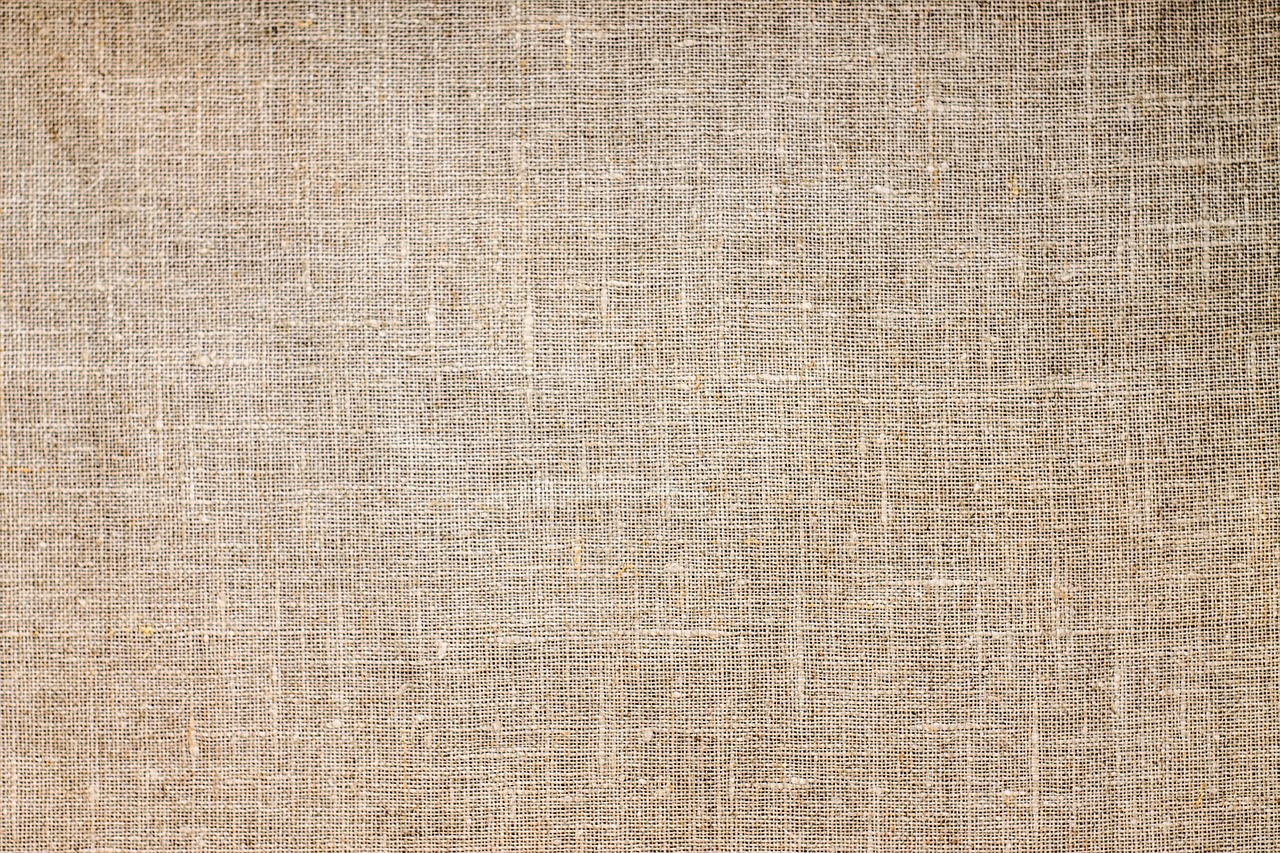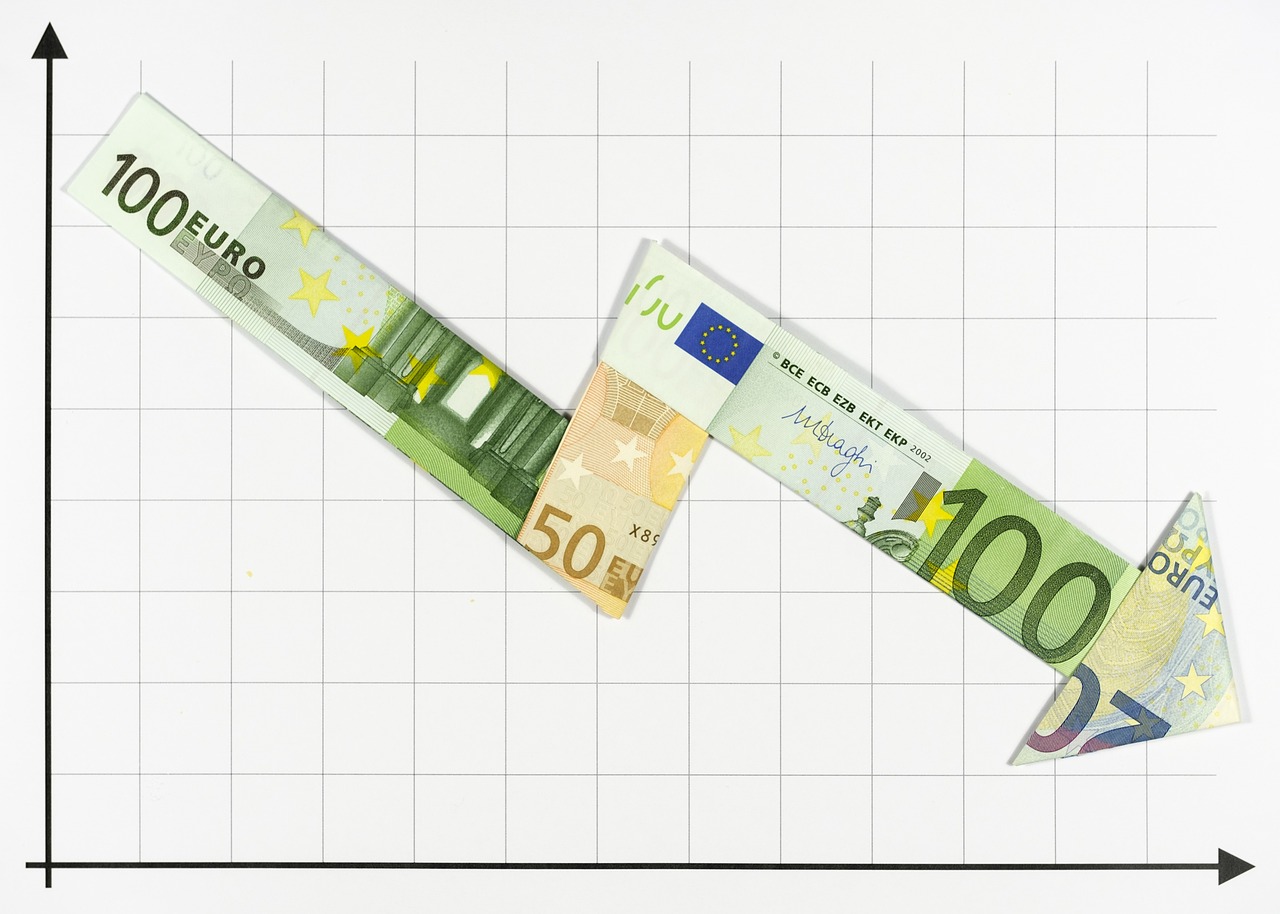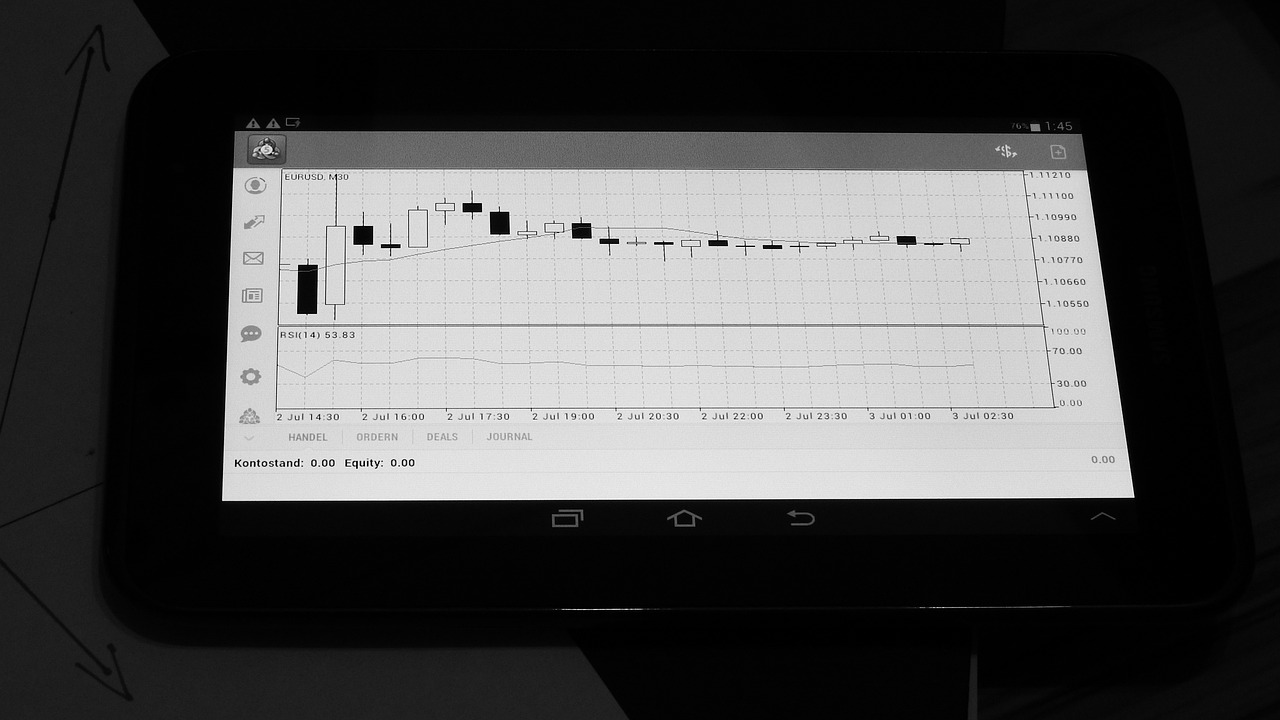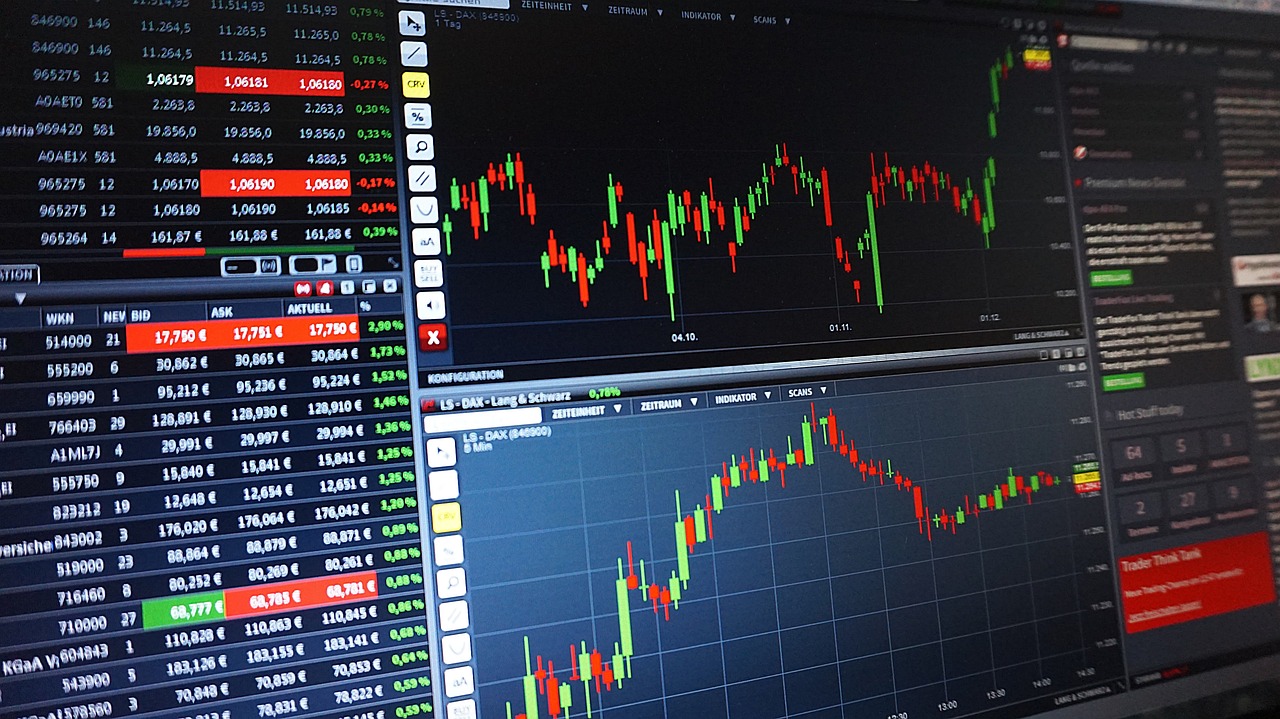Understanding Chart Patterns - Head and Shoulders
The world of trading is like a thrilling roller coaster ride, full of ups and downs, twists and turns. One of the most intriguing aspects of this ride is the use of chart patterns to forecast price movements. Among these patterns, the head and shoulders pattern stands out as a beacon for traders looking to identify potential trend reversals. But what exactly is this pattern, and why is it so significant in the realm of technical analysis? In this article, we will dive deep into the intricacies of the head and shoulders pattern, unraveling its mysteries and exploring how traders can leverage this knowledge to make informed decisions.
The head and shoulders pattern is a popular reversal pattern that typically signals a change in the prevailing trend. This pattern consists of three distinct peaks, with the middle peak being the highest—hence the name "head and shoulders." Traders often look for this pattern as it provides a visual representation of market sentiment and potential price movements. When identified correctly, it can serve as a powerful tool for predicting future price action and making strategic trading decisions.
Understanding the different types of head and shoulders patterns is crucial for any trader aiming to enhance their market analysis skills. There are two main types:
- Standard Head and Shoulders: This pattern typically appears at the top of an uptrend, signaling a potential bearish reversal.
- Inverse Head and Shoulders: This pattern forms at the bottom of a downtrend, indicating a potential bullish reversal.
Each type serves a distinct purpose in market analysis, and recognizing them can open the door to significant trading opportunities.
The standard head and shoulders pattern is a classic formation that traders often encounter at the peak of an uptrend. It’s like a warning sign flashing in front of you, indicating that the bullish momentum may soon come to an end. Understanding its formation is crucial for effective trading. The pattern consists of three peaks: the left shoulder, the head, and the right shoulder. Each peak represents a different phase of market sentiment:
- The left shoulder forms when the price rises to a peak and then declines.
- The head is the highest peak, created when the price rises again, surpassing the left shoulder, before declining once more.
- The right shoulder forms as the price rises again, but this time it fails to reach the height of the head before declining.
Each stage of the standard head and shoulders pattern signifies different market sentiments and trader behaviors. The left shoulder represents initial bullish enthusiasm, the head showcases the peak of optimism, and the right shoulder reflects a waning interest as traders start to realize that the trend may be reversing. This dynamic interplay of emotions creates a powerful visual cue for traders.
When it comes to trading the standard head and shoulders pattern, having a solid strategy is essential. Traders often employ specific tactics, including:
- Entry Points: Traders typically enter a short position once the price breaks below the neckline.
- Stop-Loss Placements: A common practice is to place a stop-loss order above the right shoulder to minimize potential losses.
- Profit Targets: Traders often set profit targets based on the height of the head from the neckline.
These strategies can help traders maximize their potential gains while managing risk effectively.
On the flip side, the inverse head and shoulders pattern presents a unique opportunity for traders looking to capitalize on bullish reversals. This pattern typically forms at the bottom of a downtrend, signaling that the market may soon shift from bearish to bullish. Recognizing this pattern can lead to significant trading opportunities, as it indicates a potential change in market sentiment.
Recognizing the head and shoulders pattern requires careful analysis of price movements and volume. Traders must look for specific characteristics to confirm the pattern's validity. This involves observing the peaks and troughs, as well as the overall market context.
The key characteristics of the head and shoulders pattern include:
- Peak Heights: The relative heights of the peaks can indicate the strength of the trend.
- Volume Trends: Volume should ideally increase during the formation of the left shoulder and head, and decrease during the formation of the right shoulder.
- Neckline Formation: The neckline is drawn by connecting the troughs formed between the peaks. A break below this line is critical for confirming the pattern.
These elements are essential for validating the pattern's reliability in trading.
Volume plays a critical role in confirming the head and shoulders pattern. Analyzing volume trends can provide insights into the strength of the reversal signal. For instance, a significant increase in volume during the formation of the head indicates strong buying interest, while a decrease during the right shoulder suggests diminishing bullish sentiment. Understanding these volume dynamics can enhance trading decisions and lead to more successful outcomes.
Q: How reliable is the head and shoulders pattern?
A: While no pattern is foolproof, the head and shoulders pattern is generally considered reliable, especially when confirmed with volume analysis and other technical indicators.
Q: Can the head and shoulders pattern occur in any market?
A: Yes, the head and shoulders pattern can be observed in various financial markets, including stocks, forex, and commodities.
Q: What should I do if I identify a head and shoulders pattern?
A: If you identify a head and shoulders pattern, consider developing a trading strategy that includes entry points, stop-loss placements, and profit targets based on the pattern's characteristics.

What is the Head and Shoulders Pattern?
The head and shoulders pattern is one of the most recognized and widely used chart patterns in the realm of technical analysis. Picture it as a mountain range with three distinct peaks: the left shoulder, the head, and the right shoulder. This pattern is not just a pretty sight; it serves as a powerful indicator of a potential trend reversal in the market. When traders spot this formation, they often anticipate a shift in market momentum, signaling that the current trend is losing steam.
So, why is it called the head and shoulders pattern? Well, the name comes from the shape that this formation creates on a price chart. The left shoulder represents a peak followed by a decline, the head is the highest peak, and the right shoulder mirrors the left shoulder's height but is typically lower than the head. This structure signifies a battle between buyers and sellers, where the sellers are gradually gaining strength, hinting at a bearish reversal after an uptrend.
What makes the head and shoulders pattern particularly appealing to traders is its reliability. Statistically, this pattern has a high success rate in predicting market reversals. However, like any trading strategy, it’s essential to combine it with other indicators and analysis techniques to enhance decision-making. For instance, traders often look at volume trends alongside the pattern. A significant increase in volume during the formation of the head and shoulders can confirm the strength of the reversal signal.
To better understand its significance, let’s break down the key components of the pattern:
- Left Shoulder: The price rises to a peak and then declines.
- Head: The price climbs higher, reaching a peak above the left shoulder, followed by another decline.
- Right Shoulder: The price rises again but does not exceed the height of the head, eventually declining once more.
Once the right shoulder forms, traders look for a breakout below the neckline, which is drawn by connecting the lows of the left shoulder and the head. This breakout serves as a strong signal to enter a trade, as it confirms the bearish reversal. Understanding this pattern is crucial for traders aiming to capitalize on market shifts and make informed trading decisions.

Types of Head and Shoulders Patterns
The head and shoulders pattern is not just a single formation; it has two distinct variations that traders need to be aware of: the standard head and shoulders and the inverse head and shoulders. Each of these patterns serves a different purpose in the realm of technical analysis and can significantly impact trading strategies. Understanding these types is crucial for traders aiming to capitalize on potential market reversals.
The standard head and shoulders pattern typically appears at the pinnacle of an uptrend. This formation is characterized by three peaks: the left shoulder, the head, and the right shoulder. When traders spot this pattern, it often signals that the upward momentum is weakening and a bearish reversal could be imminent. The left shoulder forms as the price reaches a peak and then retraces, followed by a higher peak (the head) and another retracement. Finally, the right shoulder forms, which is usually lower than the head but similar in height to the left shoulder. This sequence of peaks creates a visually striking pattern that traders can use to make informed decisions.
On the other hand, the inverse head and shoulders pattern is the bullish counterpart to the standard version. This pattern typically emerges at the bottom of a downtrend, indicating a potential shift towards a bullish market. The formation mirrors that of the standard head and shoulders but inverted; it consists of three troughs: the left shoulder, head, and right shoulder. Traders often look for this pattern as a signal that the downward trend is losing strength and that a price increase may be on the horizon. Recognizing the inverse head and shoulders pattern can be a game-changer, as it often precedes significant upward movements in price.
To summarize, both types of head and shoulders patterns serve as critical indicators for traders. While the standard pattern signals a potential bearish reversal, the inverse pattern suggests a bullish reversal. Understanding these formations can empower traders to make more informed decisions and enhance their trading strategies. Below is a simple table that encapsulates the key differences between the two patterns:
| Pattern Type | Market Trend | Formation | Signal |
|---|---|---|---|
| Standard Head and Shoulders | Uptrend | Three peaks (left shoulder, head, right shoulder) | Bearish reversal |
| Inverse Head and Shoulders | Downtrend | Three troughs (left shoulder, head, right shoulder) | Bullish reversal |
In conclusion, recognizing the differences between the standard and inverse head and shoulders patterns is essential for any trader looking to navigate the complexities of the market. By understanding when and where these patterns occur, traders can position themselves to take advantage of potential reversals, maximizing their trading opportunities.
What is the significance of the head and shoulders pattern in trading?
The head and shoulders pattern is significant because it indicates potential reversals in market trends, helping traders make informed decisions.
How can I identify a head and shoulders pattern?
Look for three distinct peaks in the standard pattern or three troughs in the inverse pattern, along with volume trends to confirm the formation.
Are head and shoulders patterns reliable?
While they are widely used, no pattern is foolproof. It's essential to combine them with other indicators for better accuracy.

Standard Head and Shoulders
The standard head and shoulders pattern is a pivotal formation in the world of technical analysis, often emerging as a beacon for traders seeking to navigate the tumultuous waters of the stock market. Typically, this pattern appears after a robust uptrend, serving as a warning signal that the bullish momentum may be about to reverse. Imagine standing at the edge of a cliff, gazing out at the vast ocean of opportunities; the head and shoulders pattern is like a storm brewing on the horizon, hinting at the potential for a significant shift in market dynamics.
At its core, the standard head and shoulders pattern consists of three distinct peaks: the left shoulder, the head, and the right shoulder. Each of these peaks represents a unique phase in the market's emotional landscape. The left shoulder forms when the price reaches a high, followed by a pullback that allows traders to catch their breath. Then, the price surges again, creating the head—this is the highest point of the pattern. Finally, the right shoulder forms as the price attempts to replicate the earlier highs but falls short, indicating waning buying pressure. This sequence of peaks is not just a visual spectacle; it tells a story of shifting trader sentiment and market psychology.
Understanding the formation stages of the standard head and shoulders pattern is crucial for effective trading. Each stage signifies different market sentiments and trader behaviors. For instance, during the formation of the left shoulder, the market is still bullish, and traders are optimistic. However, as the head forms, exuberance turns to overconfidence, leading to a peak that often results in profit-taking and subsequent decline. When the right shoulder forms, it becomes evident that the market is struggling to maintain its highs, and this is where astute traders can position themselves for a potential reversal.
To maximize potential gains when trading the standard head and shoulders pattern, traders often employ specific strategies that include determining optimal entry points, setting stop-loss placements, and defining profit targets. A common approach is to enter a short position once the price breaks below the neckline, which is drawn by connecting the lows of the two troughs that form between the shoulders. This neckline acts as a critical support level, and its breach can trigger a cascade of selling activity.
Traders might also consider placing their stop-loss orders just above the right shoulder to protect against unexpected price movements. This strategic positioning allows for a calculated risk, ensuring that losses are minimized if the market does not behave as anticipated. Profit targets can be estimated by measuring the distance from the head to the neckline and projecting that distance downward from the neckline break. This method provides a clear framework for traders to follow, enhancing their decision-making process.
In summary, the standard head and shoulders pattern is more than just a visual representation of price action; it encapsulates the collective psychology of market participants. By understanding its formation and employing effective trading strategies, traders can harness this powerful pattern to navigate the complexities of the market with confidence.
- What does the head and shoulders pattern indicate? The head and shoulders pattern indicates a potential reversal in trend, typically signaling a shift from bullish to bearish sentiment.
- How can traders identify a head and shoulders pattern? Traders can identify this pattern by looking for three peaks, with the middle peak (the head) being the highest, and the two outer peaks (the shoulders) being lower and roughly equal in height.
- What is the significance of the neckline? The neckline is a critical support level that, when broken, confirms the reversal signal of the pattern and can trigger further selling pressure.
- Can the head and shoulders pattern fail? Yes, like any trading strategy, the head and shoulders pattern is not foolproof and can fail, which is why it's essential to use stop-loss orders to manage risk.

Formation Stages
The formation of the standard head and shoulders pattern is a fascinating journey that unfolds over time, much like a well-crafted story. It consists of three distinct peaks: the left shoulder, the head, and the right shoulder. Each of these peaks represents a unique phase in the market's emotional rollercoaster, showcasing the ebb and flow of trader sentiment.
Let's break down each stage:
- Left Shoulder: This is where the story begins. The price rises to a peak, driven by optimism and bullish sentiment. Traders are confident, and the market seems to be on a high. However, as the price reaches this first peak, profit-taking begins, leading to a slight decline. This decline sets the stage for the next phase.
- Head: After the left shoulder, the price climbs even higher, creating the head. This peak is the pinnacle of excitement, where traders are most convinced that the upward trend will continue. However, just like in any good drama, the tension builds. Following this peak, traders begin to realize that the market may be overbought, leading to another pullback.
- Right Shoulder: Finally, we reach the right shoulder. The price attempts to rise again but fails to reach the height of the head. This failure signals a shift in sentiment, as traders start to become more cautious. The formation of the right shoulder is crucial; it confirms that the bullish trend is faltering and that a reversal may be imminent.
Understanding these stages can be likened to watching a movie where the plot thickens. Each peak tells a part of the story, giving traders insight into potential market reversals. Recognizing these stages allows traders to anticipate future price movements, making it an essential skill in technical analysis.
Moreover, the neckline plays a pivotal role in this formation. It is drawn by connecting the lows that occur after the left shoulder and the head. When the price breaks below this neckline, it serves as a powerful confirmation of the reversal, signaling traders to take action. The neckline acts as a line in the sand; once crossed, it often leads to increased selling pressure.
In summary, the formation stages of the head and shoulders pattern are not just random peaks; they are a reflection of market psychology. By understanding these stages, traders can better position themselves in the market, potentially increasing their chances of success.
1. What does the head and shoulders pattern indicate?
The head and shoulders pattern typically indicates a potential bearish reversal in an uptrend, while the inverse pattern indicates a bullish reversal in a downtrend.
2. How can I identify a head and shoulders pattern?
Look for three peaks: the left shoulder, the head, and the right shoulder, along with a neckline that connects the lows. Confirm the pattern with volume analysis.
3. What should I do when I recognize a head and shoulders pattern?
Consider entering a short position when the price breaks below the neckline. It's also wise to set stop-loss orders to manage risk effectively.
4. Can the head and shoulders pattern fail?
Yes, like any trading signal, the head and shoulders pattern can fail. Always use additional analysis and risk management strategies to safeguard your trades.

Trading Strategies
When it comes to trading the head and shoulders pattern, having a solid strategy is essential for maximizing your potential gains. Traders often employ various techniques to ensure they make informed decisions based on this pattern. One of the first steps is to identify entry points. Typically, traders look for a breakout below the neckline, which is the horizontal line drawn across the lows of the pattern. This breakout signals that the trend is likely to reverse, making it a prime opportunity to enter a short position.
But wait, before diving in, it's crucial to establish a stop-loss placement. A common approach is to set the stop-loss just above the right shoulder. This way, if the market moves against you, your losses are minimized, allowing you to stay in the game without taking a significant hit. Think of it as putting on a seatbelt before a drive; it’s a precaution that can save you from unexpected bumps along the road.
Next, let’s talk about profit targets. Many traders use the height of the head to determine their profit target. For instance, if the distance from the head to the neckline is 10 points, traders might aim for a 10-point profit from the breakout point. This method helps in setting realistic expectations and ensures that traders are not overly optimistic about their gains.
Additionally, keeping an eye on the market context is vital. The head and shoulders pattern does not exist in a vacuum; it’s essential to consider broader market trends and news events that could impact price movements. For example, if the overall market sentiment is strongly bullish, a head and shoulders pattern might not be as reliable. Thus, integrating fundamental analysis with technical patterns can lead to more robust trading strategies.
Lastly, don’t forget about risk management. It's not just about how much you can gain, but how much you can afford to lose. Having a clear risk-reward ratio in mind before entering a trade can help you make better decisions. Many traders aim for at least a 1:2 risk-reward ratio, meaning they are willing to risk $1 to potentially gain $2. This approach keeps your trading account healthy and increases the chances of long-term success.
In summary, trading the head and shoulders pattern effectively requires a well-thought-out strategy that includes identifying entry points, placing stop-loss orders, setting profit targets, considering market context, and practicing sound risk management. With these strategies in your toolkit, you can navigate the complexities of trading more confidently.
- What is the head and shoulders pattern?
The head and shoulders pattern is a technical analysis pattern that indicates a potential reversal in price trends, typically signaling a shift from bullish to bearish sentiment.
- How do I identify a head and shoulders pattern?
Look for three peaks: the left shoulder, the head, and the right shoulder, with a neckline connecting the lows. A breakout below the neckline confirms the pattern.
- What is the significance of volume in this pattern?
Volume analysis is crucial as it helps confirm the strength of the reversal signal. Increasing volume during the formation of the pattern adds to its reliability.
- Can the head and shoulders pattern fail?
Yes, like any trading strategy, the head and shoulders pattern can fail. It’s important to use stop-loss orders and manage risks effectively.

Inverse Head and Shoulders
This article explores the head and shoulders chart pattern, its significance in technical analysis, and how traders can utilize it to make informed trading decisions.
The head and shoulders pattern is a popular reversal pattern that indicates a potential trend change. It consists of three peaks and is widely used by traders for predictive analysis.
There are two main types of head and shoulders patterns: the standard head and shoulders and the inverse pattern. Each serves a different purpose in market analysis and trading strategies.
The standard head and shoulders pattern typically appears at the top of an uptrend, signaling a potential bearish reversal. Understanding its formation is crucial for effective trading.
The formation of the standard head and shoulders pattern involves three peaks: the left shoulder, head, and right shoulder. Each stage signifies different market sentiments and trader behaviors.
Traders often use specific strategies when trading the standard head and shoulders pattern, including entry points, stop-loss placements, and profit targets to maximize potential gains.
The inverse head and shoulders pattern is a fascinating and highly valuable chart formation that appears at the bottom of a downtrend. This pattern signals a potential bullish reversal, which can be a golden opportunity for traders looking to capitalize on a market turnaround. Imagine a coiled spring ready to unleash its energy; that's the kind of potential this pattern embodies.
To visualize the inverse head and shoulders, picture three distinct troughs forming a sort of "M" shape. The left shoulder dips down, followed by a deeper dip for the head, and finally, a right shoulder that mirrors the left. This configuration reflects a shift in market sentiment from bearish to bullish, as buyers start to outnumber sellers, creating a powerful reversal signal.
Recognizing the inverse head and shoulders pattern is essential for traders. Here are some key aspects to consider:
- Left Shoulder: This is where the price initially declines, creating a trough before a rally.
- Head: The price drops further, forming a deeper trough, before buyers step in again.
- Right Shoulder: The price rises again but doesn't reach the height of the head, forming a final trough.
Once the pattern is identified, traders often look for confirmation through a breakout above the neckline, which is drawn across the peaks of the left and right shoulders. This breakout serves as a powerful signal to enter a long position, as it indicates that the bullish momentum is likely to continue.
In terms of trading strategies, the inverse head and shoulders pattern can be approached with several tactical considerations:
- Entry Point: Traders typically enter a position once the price breaks above the neckline.
- Stop-Loss Placement: A common practice is to place a stop-loss just below the right shoulder to minimize potential losses.
- Profit Target: Traders often set a target based on the height of the head to gauge potential price movement.
Understanding the inverse head and shoulders pattern can be the difference between a missed opportunity and a successful trade. It's a classic example of how technical analysis can provide insights into market psychology and future price movements. So, the next time you spot this pattern, remember: it might just be the signal you've been waiting for!
Recognizing the head and shoulders pattern requires careful analysis of price movements and volume. Traders must look for specific characteristics to confirm the pattern's validity.
The key characteristics of the head and shoulders pattern include peak heights, volume trends, and neckline formation. These elements are essential for validating the pattern's reliability in trading.
Volume plays a critical role in confirming the head and shoulders pattern. Analyzing volume trends can provide insights into the strength of the reversal signal and enhance trading decisions.
What is the significance of the inverse head and shoulders pattern?
The inverse head and shoulders pattern indicates a potential bullish reversal, which can signal a great entry point for traders looking to buy.
How can I confirm the validity of this pattern?
Confirmation comes from a breakout above the neckline, along with increasing volume, which indicates strong buying interest.
What should I do if the pattern fails?
If the price fails to break the neckline or reverses back below the right shoulder, it's wise to reassess your position and consider a stop-loss to limit potential losses.

Identifying the Pattern
Recognizing the head and shoulders pattern is crucial for traders looking to capitalize on potential market reversals. This isn't just about spotting three peaks; it's about understanding the market's psychology behind these formations. Each part of the pattern tells a story, and by piecing these stories together, traders can make informed decisions. So, how do you identify this pattern effectively?
First and foremost, you need to look at the price movements. The standard head and shoulders pattern typically forms after a strong uptrend, while the inverse head and shoulders appears at the end of a downtrend. The key is to watch for the three distinct peaks: the left shoulder, the head, and the right shoulder. But it’s not just about the peaks; the neckline is equally important. This line connects the lows between the shoulders and serves as a critical support or resistance level.
To further enhance your identification skills, consider the following key characteristics:
- Peak Heights: The head is the highest peak, while the shoulders are lower and roughly equal in height.
- Volume Trends: Volume should ideally increase during the formation of the head and decrease during the formation of the right shoulder.
- Neckline Formation: This can be horizontal or sloped, but it’s essential for confirming the pattern once the price breaks through it.
One of the most effective ways to validate the head and shoulders pattern is through volume analysis. Volume is like the heartbeat of the market; it gives you insight into the strength and conviction behind price movements. For instance, during the formation of the left shoulder and head, you should see increasing volume, indicating strong buying interest. However, as the right shoulder forms, volume typically diminishes, suggesting a weakening trend. This drop in volume can signal that buyers are losing interest, making the breakout from the neckline a significant event.
In summary, identifying the head and shoulders pattern requires a keen eye for detail and an understanding of market dynamics. It’s not just about the peaks and the neckline; it’s about the story they tell and the emotions behind them. By mastering these concepts, you can enhance your trading strategy and make more informed decisions.
What is the significance of the neckline in the head and shoulders pattern?
The neckline acts as a key support or resistance level. A breakout below the neckline in a standard head and shoulders pattern confirms a bearish reversal, while a breakout above the neckline in an inverse pattern signals a bullish reversal.
How can volume analysis improve my trading decisions?
Volume analysis helps you gauge the strength of the pattern. Increasing volume during the formation of the head indicates strong buying interest, while decreasing volume during the right shoulder suggests a potential reversal.
Can head and shoulders patterns fail?
Yes, like any trading pattern, head and shoulders can fail. It’s essential to use additional confirmation tools, such as volume analysis or other technical indicators, to validate the pattern before making trading decisions.

Key Characteristics
Understanding the of the head and shoulders pattern is essential for any trader looking to harness its potential. This pattern isn't just a random collection of peaks; it's a structured formation that tells a story about market sentiment and trader behavior. The three peaks—left shoulder, head, and right shoulder—each play a pivotal role in the overall narrative of the pattern.
First, let's talk about the heights of the peaks. The left shoulder and the right shoulder should ideally be of similar height, while the head is typically the highest peak. This configuration signifies that the market is experiencing a struggle between buyers and sellers, where the buyers initially push prices higher, but eventually, sellers take control. The relative heights of these peaks can help traders gauge the strength of the trend reversal.
Next, we can't overlook the significance of the neckline. The neckline is formed by connecting the lowest points of the two shoulders. It serves as a critical level of support or resistance. A breakout below this neckline confirms the pattern and suggests that the bearish trend is likely to continue. Traders often look for a significant price movement below this level to validate their trading decisions.
Another important aspect to consider is volume trends. Volume is like the heartbeat of the market; it tells us how strongly the market participants are reacting to price movements. Ideally, volume should increase during the formation of the left shoulder and head, and then decrease during the right shoulder. A surge in volume when the price breaks below the neckline can be a strong confirmation of the pattern, indicating that the sellers are gaining momentum.
Additionally, it's crucial to observe the time frame in which the pattern forms. The head and shoulders pattern can appear on various time frames, from minutes to daily charts. However, the longer the time frame, the more reliable the pattern tends to be. This is because longer time frames generally reflect more significant market sentiment and reduce the noise that can affect shorter time frames.
In summary, recognizing the head and shoulders pattern involves analyzing the heights of the peaks, the formation of the neckline, and the associated volume trends. By paying attention to these key characteristics, traders can enhance their ability to make informed decisions and increase their chances of success in the market.
- What does the head and shoulders pattern signify? The head and shoulders pattern typically indicates a potential trend reversal, suggesting that a bullish trend may be turning bearish.
- How can I confirm the head and shoulders pattern? Confirmation comes from a breakout below the neckline accompanied by increased volume, indicating strong selling pressure.
- Can the head and shoulders pattern appear on any time frame? Yes, it can appear on various time frames, but patterns on longer time frames are generally more reliable.
- What should I do if I spot a head and shoulders pattern? Consider entering a short position once the price breaks below the neckline, ensuring to set appropriate stop-loss orders to manage risk.

Volume Analysis
When it comes to trading, volume is like the heartbeat of the market. It tells you how many shares or contracts are being traded over a certain period, and understanding it is crucial for validating chart patterns like the head and shoulders. Why is this important? Well, volume can either confirm or contradict the price movements you're observing. For instance, if you see a head and shoulders pattern forming but the volume isn't increasing, you might want to think twice before making any trading decisions.
To truly grasp the significance of volume in the context of the head and shoulders pattern, let’s break it down into a few key points:
- Volume Surge on the Left Shoulder: Typically, you would expect to see a spike in volume as the price reaches the left shoulder. This indicates strong buying interest and can set the stage for the upcoming head.
- Volume Decrease at the Head: As the price peaks at the head, the volume often decreases. This can signal that the buying pressure is waning, hinting at a potential reversal.
- Volume Increase on the Right Shoulder: When the price starts to form the right shoulder, a notable increase in volume can suggest that traders are becoming more interested again, which might lead to a breakout or breakdown.
- Neckline Breakout Volume: The most critical moment is when the price breaks below the neckline after forming the right shoulder. A significant increase in volume during this breakout can serve as a strong confirmation of the bearish reversal, making it a point of no return for many traders.
To illustrate this concept further, consider the following table that summarizes the expected volume behavior at each stage of the head and shoulders pattern:
| Stage | Expected Volume Behavior |
|---|---|
| Left Shoulder | Increase in volume as buyers push the price up. |
| Head | Decrease in volume, indicating weakening buying pressure. |
| Right Shoulder | Increase in volume as sellers start to dominate. |
| Breakout | Significant increase in volume confirming the bearish trend. |
In summary, volume analysis is not just an optional extra; it's an essential part of the trading puzzle. Ignoring volume can lead to poor trading decisions and missed opportunities. So, the next time you spot a head and shoulders pattern, make sure to examine the volume closely, as it can provide you with vital clues about the strength of the trend reversal. After all, in the world of trading, knowledge is power, and understanding volume can give you a distinct edge.
- What does a high volume indicate in a head and shoulders pattern? High volume during the formation of the pattern often indicates strong conviction among traders, making the pattern more reliable.
- Can I trade head and shoulders patterns without considering volume? While it's technically possible, it's highly discouraged as volume provides essential confirmation of the pattern's validity.
- How can I improve my volume analysis skills? Practice by reviewing historical charts and observing how volume behaved during past head and shoulders formations.
Frequently Asked Questions
- What is the significance of the head and shoulders pattern in trading?
The head and shoulders pattern is significant because it signals a potential reversal in market trends. When traders spot this pattern, it often indicates that the current trend may be losing momentum, providing them with an opportunity to make informed trading decisions. Recognizing this can help traders maximize their profits or minimize losses.
- How can I identify a head and shoulders pattern effectively?
To identify a head and shoulders pattern effectively, traders should look for three distinct peaks: the left shoulder, the head, and the right shoulder. The left shoulder and the right shoulder should be roughly equal in height, while the head is the tallest peak. Additionally, observing the volume trends during the formation of this pattern can help confirm its validity.
- What are the differences between the standard and inverse head and shoulders patterns?
The standard head and shoulders pattern typically appears at the end of an uptrend and signals a bearish reversal. In contrast, the inverse head and shoulders pattern occurs at the bottom of a downtrend, indicating a potential bullish reversal. Understanding these differences is crucial for traders to position themselves correctly in the market.
- What role does volume play in confirming the head and shoulders pattern?
Volume plays a critical role in confirming the head and shoulders pattern. A strong increase in volume during the formation of the peaks and a decrease during the retracement phases can indicate the strength of the reversal signal. Traders should pay close attention to volume trends to enhance their trading decisions.
- Are there specific trading strategies associated with the head and shoulders pattern?
Yes, traders often employ specific strategies when trading the head and shoulders pattern. This includes determining entry points, setting stop-loss orders to manage risk, and establishing profit targets based on the distance from the neckline to the head. These strategies help traders maximize potential gains while minimizing their exposure to losses.



















